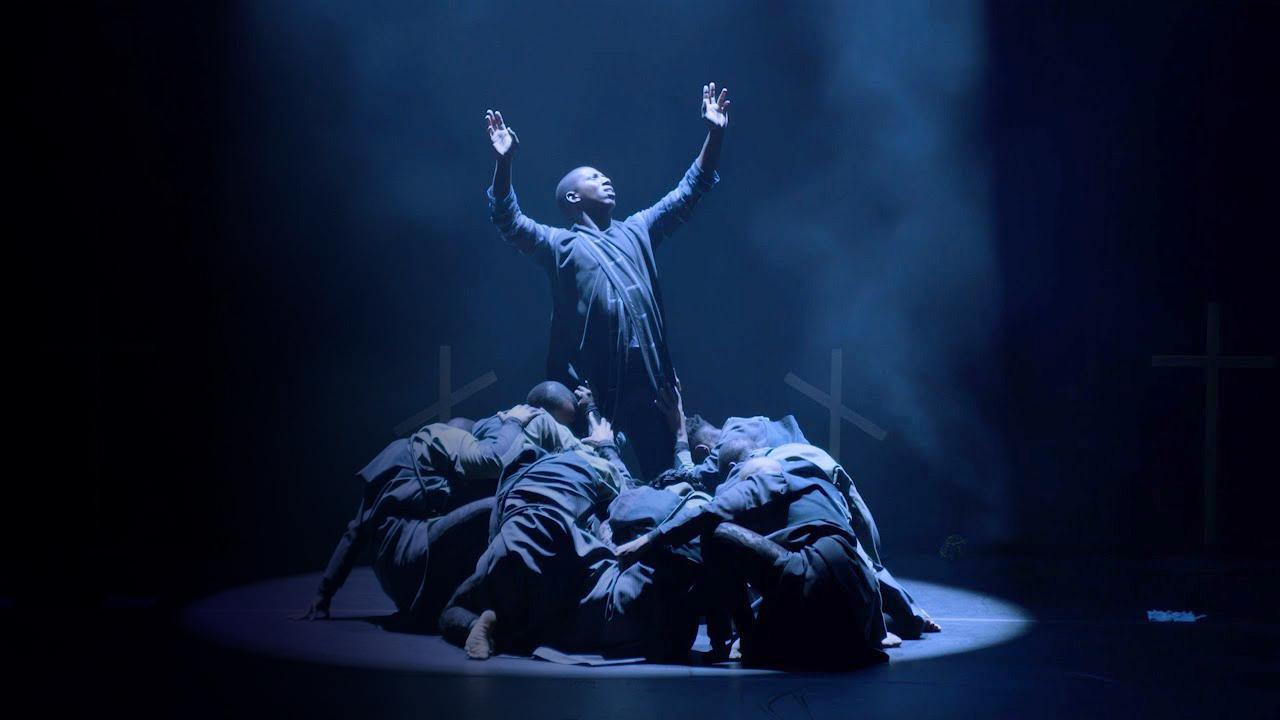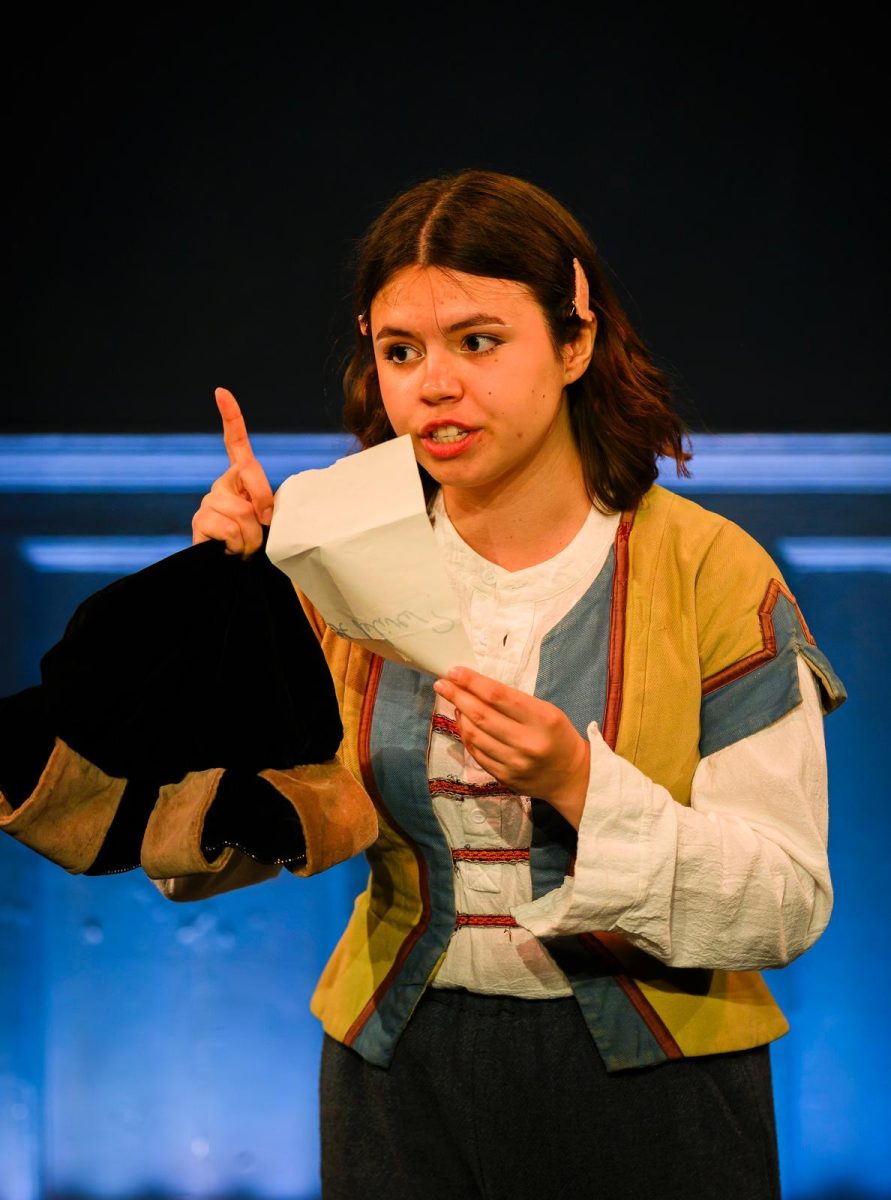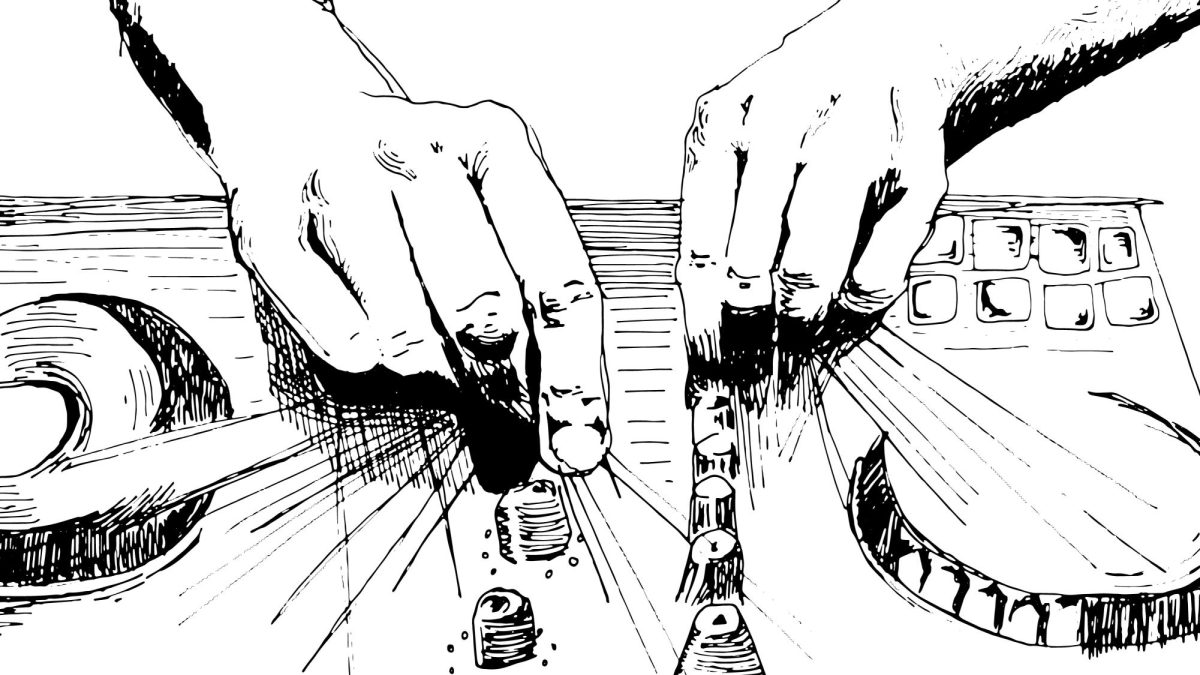
A vibrant explosion of song and dance filled the ’62 Center for Theatre and Dance last Thursday during the Vuyani Dance Company’s performance of Cion: Requiem of Ravel’s Boléro. The piece, choreographed by world-renowned South African choreographer Gregory Vuyani Maqoma, explores themes of mourning, death, and community.
Set in a graveyard, Cion draws inspiration from two books by South African novelist and poet Zakes Mda: Ways of Dying, which follows the journeys of a so-called professional mourner; and Cion, which tells the story of a person who escapes enslavement and travels to America.
Thursday’s performance was this semester’s first in the ’62 Center’s visiting artist series, an initiative in which the College invites various featured artists to perform their work for the College and Town communities. “[The visiting artist series] brings in culture that we otherwise might not experience ourselves,” Piper Dupies ’27 told the Record after watching the performance. “Learning through dance just gives us exposure to different parts of cultures that perhaps textbooks won’t teach us.”
Cion demanded the audience’s attention, both visually and sonically. Alongside choreography, members of the company performed Isicathamiya, a Zulu style of a cappella. The performance also featured a striking score composed by Nhlanhla Mahlangu and inspired by French composer Maurice Ravel’s Boléro.
“Everything is made from scratch,” cast member and beatboxer Xolsie Bongwana said during a Q&A session that followed the performance. “Within our music, there are nuances. Within Boléro, you hear 10 nuances.”
“The singing and beatboxing was out of this world,” said Leo Margolies ’26, who attended the performance. “The Boléro singing inspired by Ravel gave such energy and life to the performance. I have never in my life heard beatboxing that intricate. It was truly incredible.”
Growing up in Soweto, South Africa, Maqoma said that he would listen to the songs of mine workers when they returned from work. The workers, who came from across the country, were not permitted to sing while they worked, so they sang when they came home. Maqoma’s memories of their songs and experiences inspired the music in the piece, which alternates between three different South African languages.
Bongwana emphasized the reciprocal and integrated relationship between the music and the choreography that emerged during the creative process. “The music was built within the movement,” he said during the Q&A. “Everything was built simultaneously.”
“Most of the work is inspired by all of us,” cast member Rosaline Wilkens said in the Q&A session. “[Maqoma] is just very adamant that he creates a cocktail when he creates. He takes everything that we have as performers, and then he transforms it into what he would love to see happening in the work.”
Wilkens recalled the moment that inspired the sack-beating scene. “I was pregnant but was in the studio witnessing the premier,” she said. “I took a sack and started beating it. And [Maqoma] said, ‘Okay, let’s try that.’ And everyone hit [the sacks] again and again.”
Bongwana noted the immersive and unifying power of the piece. “When I’m in it, I’m in it,” he said. “What I feel starts from the beginning. Everything in the show, I feel it.”
“The journey we’ve been on performing this piece — some of us have been through depression, some of us have been through breakups, divorces, and a number of things,” CEO of Vuyani Dance Company Lindiwe Letwaba added during the Q&A. “For us as individuals, as we perform, it shows us that we are not immune to the message that we are going all over the globe telling, and it applies to us as well.”
The emotional resonance of Cion did not confine itself to the performers — audience members also spoke of the piece’s evocative nature. “You really can lose yourself watching the piece,” attendee Lucy Everett ’27 said. “The dance and the music pulls you in. But at the same time, it forces you to acknowledge your own emotions and your own relationship with the content.”
The ’62 Center’s visiting artist series runs through April. The next performance, The Eagle and the Tortoise, will open on Nov. 1.







